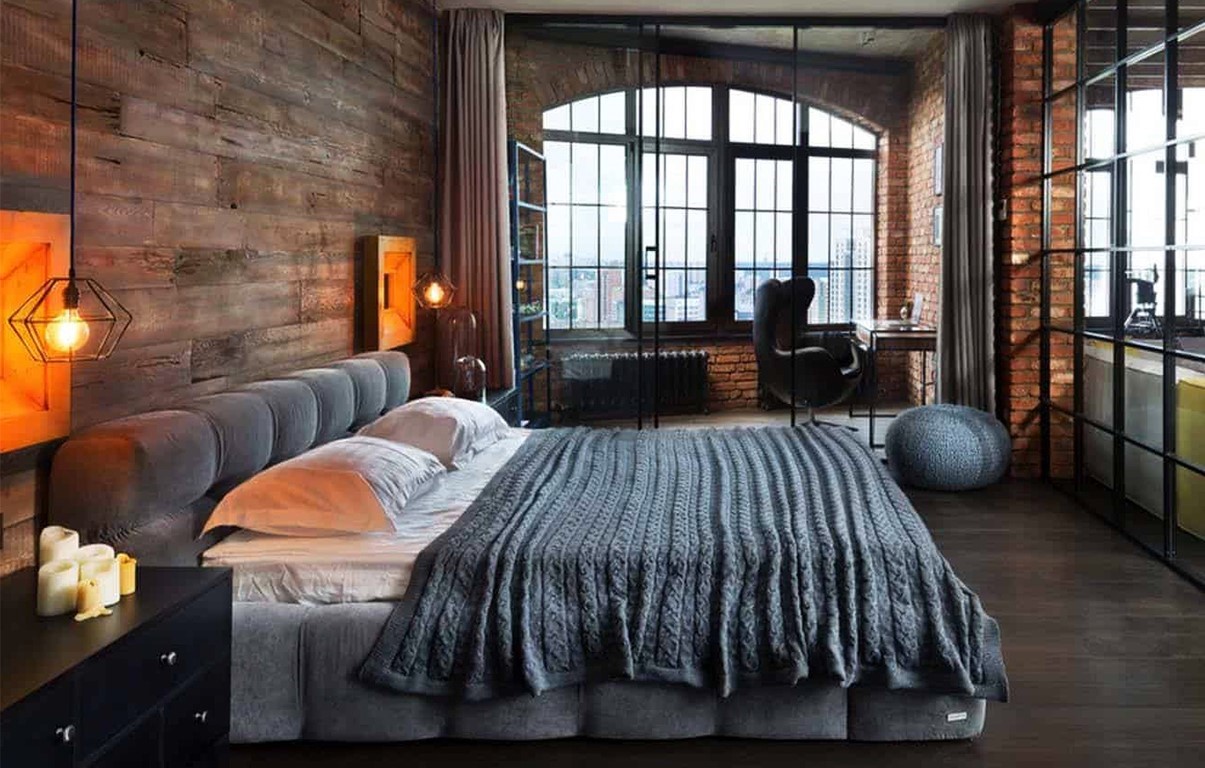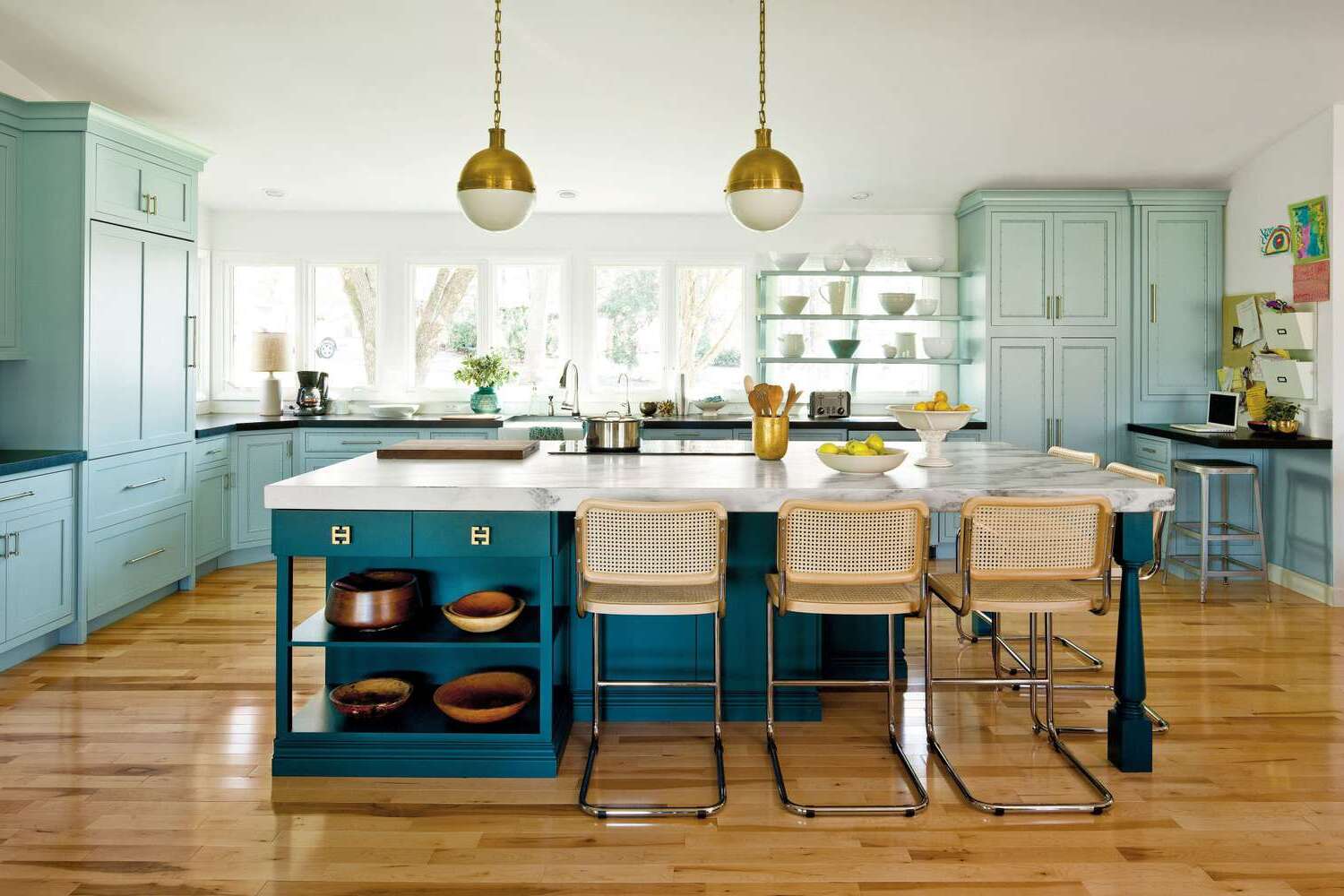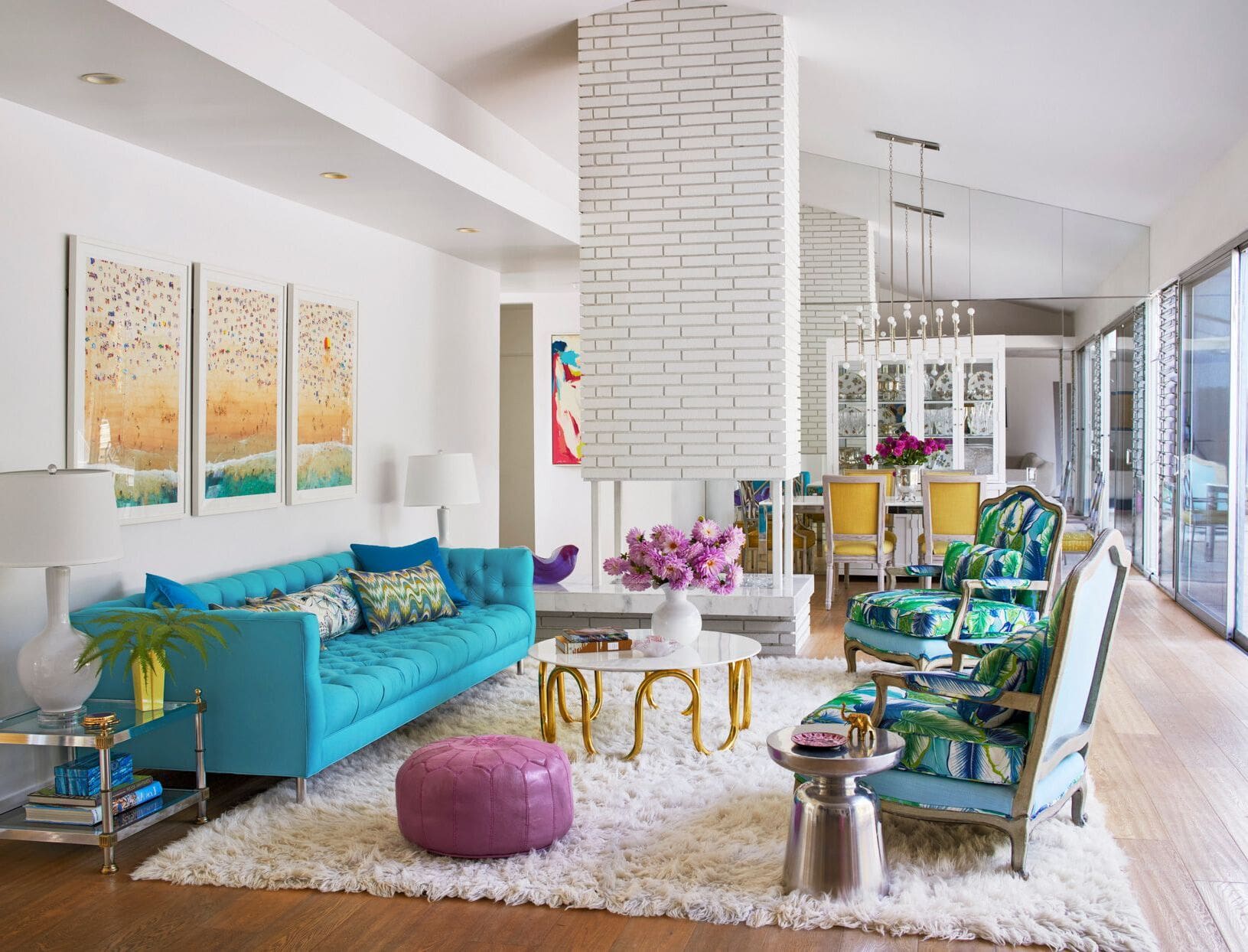Home>Ideas and Tips>How To Choose The Right Paint Colors For A Modern Industrial Kitchen


Ideas and Tips
How To Choose The Right Paint Colors For A Modern Industrial Kitchen
Published: September 20, 2024
Discover how to choose the perfect paint colors for a modern industrial kitchen, blending neutral tones and bold accents for a stylish, functional space.
(Many of the links in this article redirect to a specific reviewed product. Your purchase of these products through affiliate links helps to generate commission for Storables.com, at no extra cost. Learn more)
Choosing the right paint colors for a modern industrial kitchen can seem like a daunting task, but it doesn't have to be. The key is to understand the principles of modern industrial design and how to apply them to your space. By focusing on a neutral base, creating contrast, harmonizing with materials, considering lighting, and reflecting your personal preferences, you can create a kitchen that is both functional and stylish.
Understanding Modern Industrial Design
Modern industrial design is all about embracing raw, unfinished materials like concrete, steel, and brick. These elements are often paired with sleek, modern furniture and decor to create a space that is both functional and aesthetically pleasing. The color palette for a modern industrial kitchen typically includes a mix of neutral tones such as white, black, gray, and brown, which provide a clean and minimalist backdrop for your design.
Key Principles for Choosing Paint Colors
Before diving into specific color choices, it's essential to understand the key principles that guide the selection of paint colors in a modern industrial kitchen:
-
Neutral Base: A neutral base color is crucial for creating a clean and minimalist look. Neutral colors like white, gray, and black provide a versatile backdrop that can be paired with various design elements.
-
Contrast: Contrast is essential in creating visual interest in your kitchen. Using contrasting colors for different elements like cabinets, walls, and countertops can add depth and sophistication to your design.
-
Material Harmony: The colors you choose should harmonize with the materials used in your kitchen. For example, if you have exposed brick or concrete, you may want to choose colors that complement these elements.
-
Lighting: The amount of natural light in your kitchen can significantly affect how colors appear. If you have plenty of natural light, you can opt for darker hues; if not, lighter tones may be more suitable.
-
Personal Preference: Ultimately, the choice of paint colors should reflect your personal style and preferences. Consider what mood you want to create in your kitchen—whether it's cozy and warm or cool and sleek.
Popular Paint Colors for a Modern Industrial Kitchen
Here are some popular paint colors that are commonly used in modern industrial kitchen design:
-
White Paint Colors:
- White: White is a timeless choice for kitchen cabinets and walls. It provides a clean and minimalist look that works well with modern appliances and other design elements. Benjamin Moore’s Simply White OC-117, Chantilly Lace 2121-70, and White Down OC-131 are popular options.
- Off-White: Off-white shades like Benjamin Moore’s Muslin OC-12 or Collingwood OC-28 offer a slightly warmer alternative to pure white. These colors can add a cozy touch to your kitchen while maintaining a neutral base.
-
Gray Paint Colors:
- Gray: Gray is another versatile color that screams sleek and minimal. It works well with both modern and traditional kitchen styles. Benjamin Moore’s Gray 2121-10 is a popular choice for its elegant, charcoal hue.
- Dark Gray: For an industrial twist, consider using dark gray paint colors like Benjamin Moore’s Mysterious AF-565. These colors add depth and sophistication to your kitchen design.
-
Black Paint Colors:
- Black: Black is often used as an accent color in modern industrial kitchens to add contrast and create visual interest. Benjamin Moore’s Ebony King is a preferred choice for its deep, cool tone that maintains a vintage feel without leaning towards brown.
- Charcoal: Charcoal grays like Benjamin Moore’s Black HC-190 offer a softer alternative to pure black while still providing an elegant, industrial look.
-
Green Paint Colors:
- Green: Green is a popular choice for kitchens as it adds a refreshing touch to the space. Gentle Guilford Green HC-116, medium-toned Louisburg Green HC-113, and sage October Mist 1495 are great options from Benjamin Moore.
-
Blue Paint Colors:
- Blue: Blue is another color that can create a soothing atmosphere in your kitchen. Light blue and white combinations like Cumulus Cotton 2063-70 paired with Chantilly Lace 2121-70 or blue-green Wythe Blue HC-143 paired with White Dove OC-17 are excellent choices for achieving a bright and airy look.
Combining Colors in Your Kitchen
Combining colors in your kitchen can be daunting, but there are established principles that can guide you:
-
Tonal Colors:
- Tonal colors involve using shades that are close together on the color wheel for a calm, relaxing feel. For example, using greens, blue-green, and blues can create a harmonious palette.
-
Analogous Colors:
- Analogous colors use colors that are next to each other on the color wheel. This approach creates a smooth transition between colors and can produce a beautiful, balanced look. For instance, using Meadow Thistle (island cabinets) and Bramble colors (wall cabinets) in harmony can create a stunning kitchen design.
-
Complementary Colors:
- Complementary colors involve pairing colors that are opposite each other on the color wheel. This approach adds contrast and visual interest to your design. However, it's crucial to balance complementary colors to avoid overwhelming the space.
-
The 60:30:10 Rule:
- The 60:30:10 rule suggests using three colors in an approximate ratio of 60% for the dominant color, 30% for the secondary color, and 10% for an accent color. This rule helps in creating a balanced look by distributing colors proportionally throughout the space.
Practical Tips for Choosing Paint Colors
Here are some practical tips to help you choose the right paint colors for your modern industrial kitchen:
-
Bring Samples Home:
- Always bring paint samples home to see how they look in different lighting conditions and with various design elements.
-
Consider Sheen:
- The sheen of paint (matte, eggshell, satin, semi-gloss) contributes to the final look of your space. For example, a matte-painted wall ensures that it doesn’t compete with an opulent backsplash.
-
Neutral Elements:
- Use neutral elements like flooring and worktops as the base of your color scheme. This helps in making smaller kitchens feel larger and ensures that bold color splashes are not overwhelming.
-
Professional Help:
- If you're not confident in your ability to choose the right paint colors or if you're planning to refinish your cabinets, consider hiring a professional painter. They often prefer Benjamin Moore’s Advance Interior for its hard, furniture-quality finish.
-
Material Harmony:
- Ensure that your paint colors harmonize with the materials used in your kitchen. For instance, if you have exposed brick or concrete, choose colors that complement these elements.
Case Study: Modern Industrial Loft Design
The modern industrial loft design by Croma Design is an excellent example of how to achieve a timeless and sophisticated appeal using modern industrial elements. The design features dark wood floors as a neutral background to emphasize the sleek modern feeling of the space. The living room incorporates a colorful rug to bring in a playful element while maintaining symmetry through art choices and fireplace design.
In the dining room, industrial elements like bolsters and table finishes play with the industrial feel of the space. Built-in shelving units serve as bars, maintaining continuity from space to space with finishes used throughout the loft.
Conclusion
Choosing the right paint colors for a modern industrial kitchen involves understanding key principles like neutral bases, contrast, material harmony, lighting conditions, and personal preference. By combining these principles with popular paint colors such as white, gray, black, green, and blue, you can create a harmonious and visually appealing space that reflects your style and enhances functionality.
Remember to bring samples home for practical evaluation and consider hiring professionals if needed. With careful planning and execution, you can transform your kitchen into a stylish haven that combines functionality with aesthetic appeal.
By following these guidelines and tips, you'll be well on your way to creating a modern industrial kitchen that not only looks stunning but also functions perfectly for your daily needs. Whether you're a seasoned designer or a DIY enthusiast, understanding the right paint colors can make all the difference in achieving that perfect industrial look.
Was this page helpful?
At Storables.com, we guarantee accurate and reliable information. Our content, validated by Expert Board Contributors, is crafted following stringent Editorial Policies. We're committed to providing you with well-researched, expert-backed insights for all your informational needs.















0 thoughts on “How To Choose The Right Paint Colors For A Modern Industrial Kitchen”